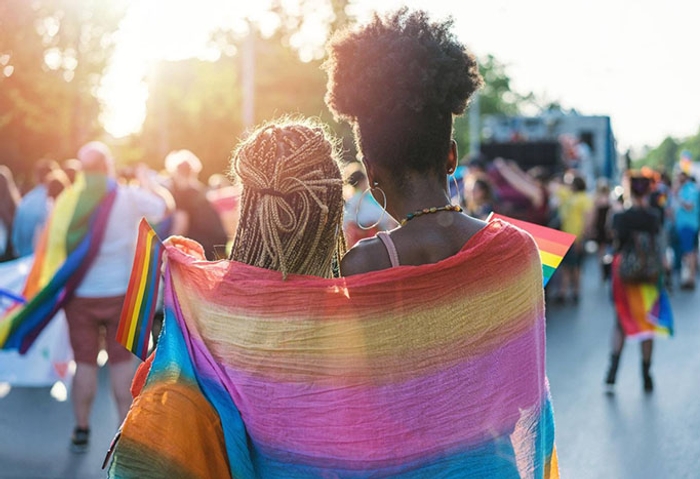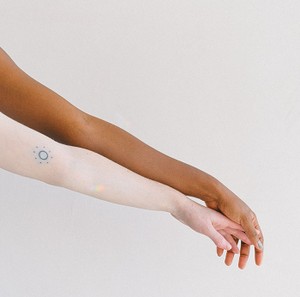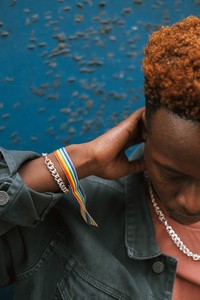The silencing of LGBTQ+ communities globally is unfortunately commonplace. In Africa, colonial legislation still dictates the nature in which the community is treated, and this has real life and death consequences for those who identify with it. Many advocates for LGBTQ+ rights in Africa have argued that the practices existed before colonialism and as such, these laws that still dictate day to day life should be repealed, as they fail to acknowledge the history of the LGBTQ+ community on the continent.
Numerous projects across the continent have focused on sharing knowledge through oral traditions in order to sensitize citizens as well as international supporters of the rich history of LGBTQ+ communities in Africa, in a bid to reduce the harsh treatment they are often privy to. With a focus on Southern Africa, this blog seeks to highlight the nuanced and complex history of LGBTQ+ communities in various countries located within the region. In the bid to create a world in which LGBTQ+ communities are loved and accepted globally, there needs to be a critical assessment of the history in different contexts in order to provide us with the necessary tools to dismantle the hate this community so frequently receives.
The Khoikhoi and San people are known to be indigenous in Southern Africa, and many of their descendants are found in countries such as Botswana, Namibia and South Africa, to name a few. Khokhoi communities recognised same sex practices through the use of the word koetsire, which describes a man who is receptive to another man. In addition, the practice of soregus, which included mutual masturbation, was also common in their culture. Looking at the San people, we see similar trends with rock paintings depicting same sex relations as part of their lives.
Many of these dominant ethnic groups over time became divided by geographical location, but the practice of same sex relations was still prevalent. The Tswana tribe, who are predominantly found in Botswana, refer to same sex relations as matanyola and tradional chiefs, otherwise known as digkosi, argue that homosexuality has always existed within the Tswana people and push for a respect for the community.
Similar trends can also be observed in Zimbabwe. Same sex marriages, otherwise known as ngotshana, were commonplace in early times, with rock paintings also depicting their existence in communities. Neighbouring Namibia also has a history of same sex relations in the Ovambo, Nama, Herero and Himba peoples. The Ovambo refer to men who have sex with men as kimbanda or eshengi. The Herero acknowledge errotic same sex friendships which they call opanga in addition to esenge men, who were seen as having feminine energy and dressed and performed their gender as women in society. For many of these communities, the idea of a gender binary was uncommon, as many of their languages do not differentiate pronouns when referring to individuals. This, amongst many other things embedded in the languages found in Southern Africa reveal to us the prevalence of sexuality outside the binary, and warrants further conversation as we tackle the homophobia found in the region.
The list of cultures and tribes that either acknowledged or practised same sex relations is plentiful within the region, but it would be remiss to discuss them in the absence of the criticism some of them faced as part of their communities. In Zimbabwe for example, although same sex relations were commonplace, they were often limited to adolescence and at a certain age, the behaviour was frowned upon by certain members of society. This sentiment is what many politicians now utilise to argue against the rights for LGBTQ communities and was the basis of many western imperialists who conflated the minority disdain for homosexuality with Christian dogma.
Acknowledging the complex history of homosexuality in southern Africa is crucial to addressing the homophobia that is prevalent today. While western belief systems can account for the tone and cadence of homophobia today, it is important to acknowledge that its ability to be pervasive in African society is also because those who opposed it existed on the continent already. When we call upon members of the southern African community to rethink their position on homosexuality, it is important to remember that the system of fear and oppression exists across borders and is what many dominant cultures weaponise to pedal harmful ideas about certain communities. As such, the reflection will not only require an assessment of how western thought has corroded the African identity, but also what role our own practices play in allowing for harmful notions to make a home within our community.
In acknowledging that homophobia, or a disdain for the LGBTQ community did exist prior to colonisation, we can begin to understand the complex nature of homophobia on the continent. This in no way creates a justification, but we may find that the push to legitimate LGBTQ cultures through the recollection of African history might be futile, if it fails to recognise the nuance in this history and the resulting contention that we see today. This understanding will allow for better programming and dialogue that will allow us to address this hate from the root, in a manner that will transform individuals and the communities they are a part of as a result.
References:
- Mabvurira et al., (2012) The “politics” of sexual identities in Zimbabwe: A Social Work perspective? International Journal of Humanities and Social Science 2(13), https://www.ijhssnet.com/journals/Vol_2_No_13_July_2012/24.pdf
- Patrick Toomey (2016) Gay Sub-Saharan Rock Art in Zim. https://www.jhblive.com/Stories-in-Johannesburg/article/gay-sub-saharan-rock-art-in-zim/82927
- Stephen O. Murray and Will Roscoe (2010) Boy-Wives and Female Husbands. https://www.willsworld.org/africa.html
- Epprecht, M. (1998). The “Unsaying” of Indigenous Homosexualities in Zimbabwe: Mapping a Blindspot in an African Masculinity. Journal of Southern African Studies, 24(4), 631–651. https://www.jstor.org/stable/2637467




